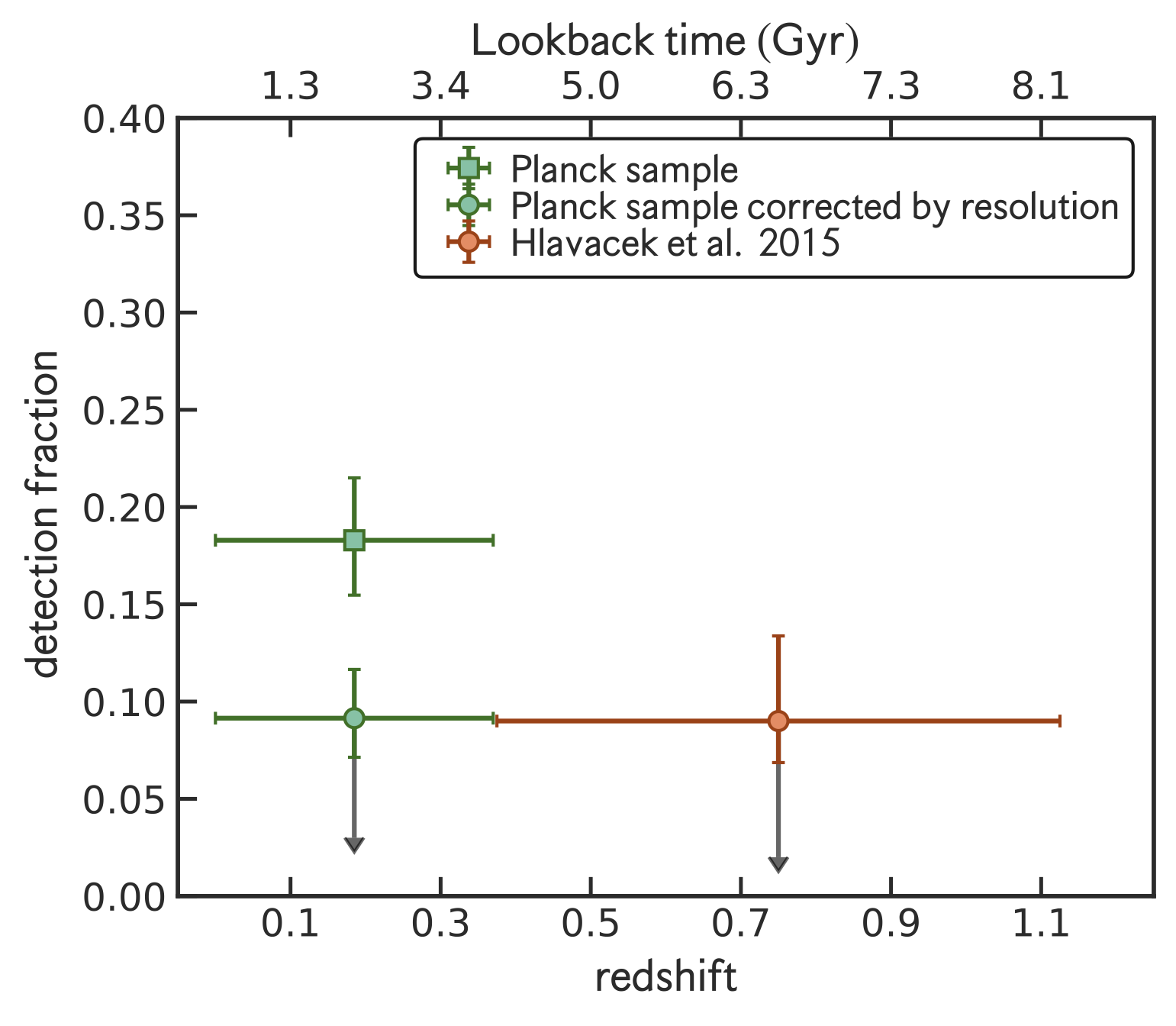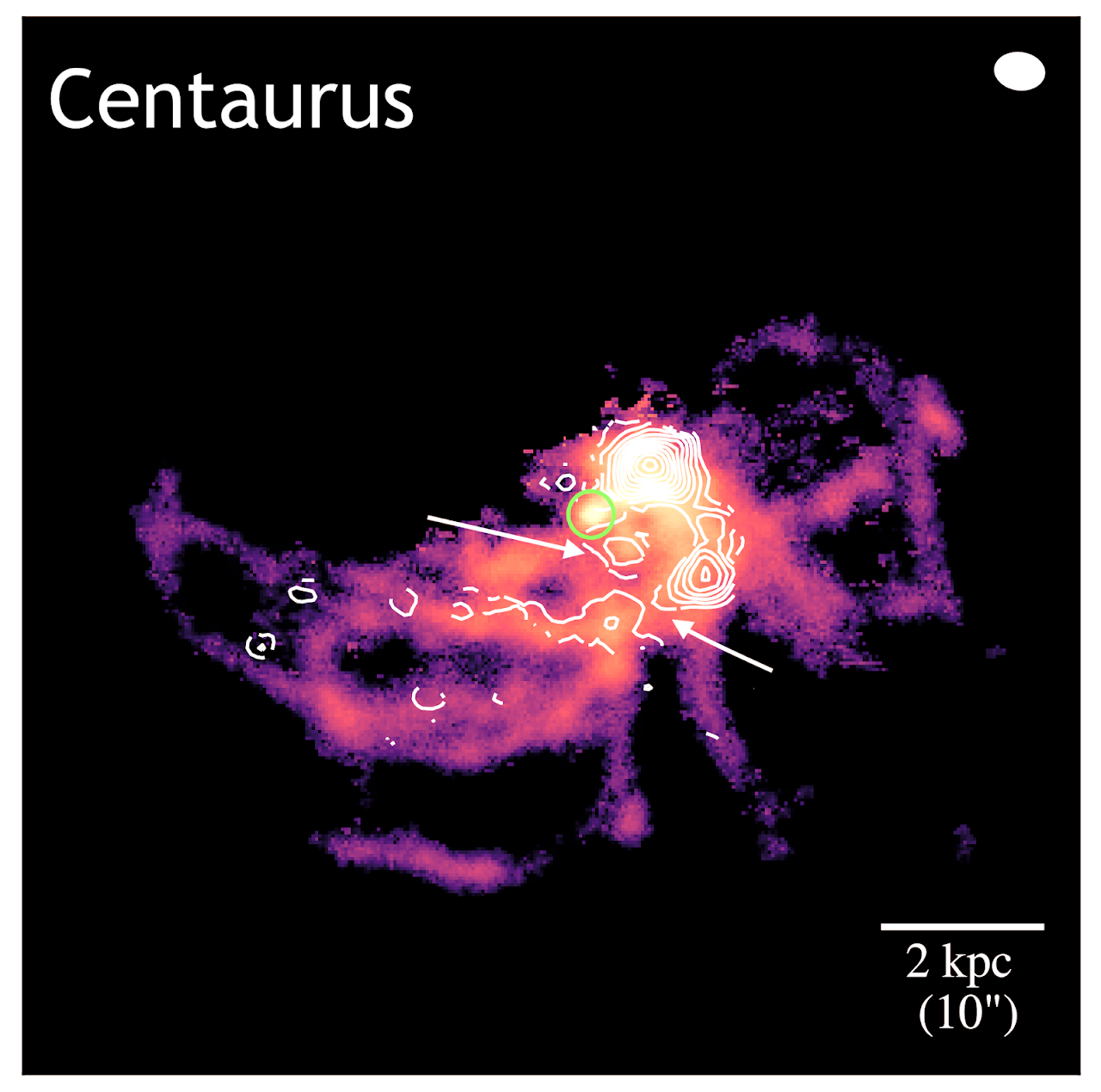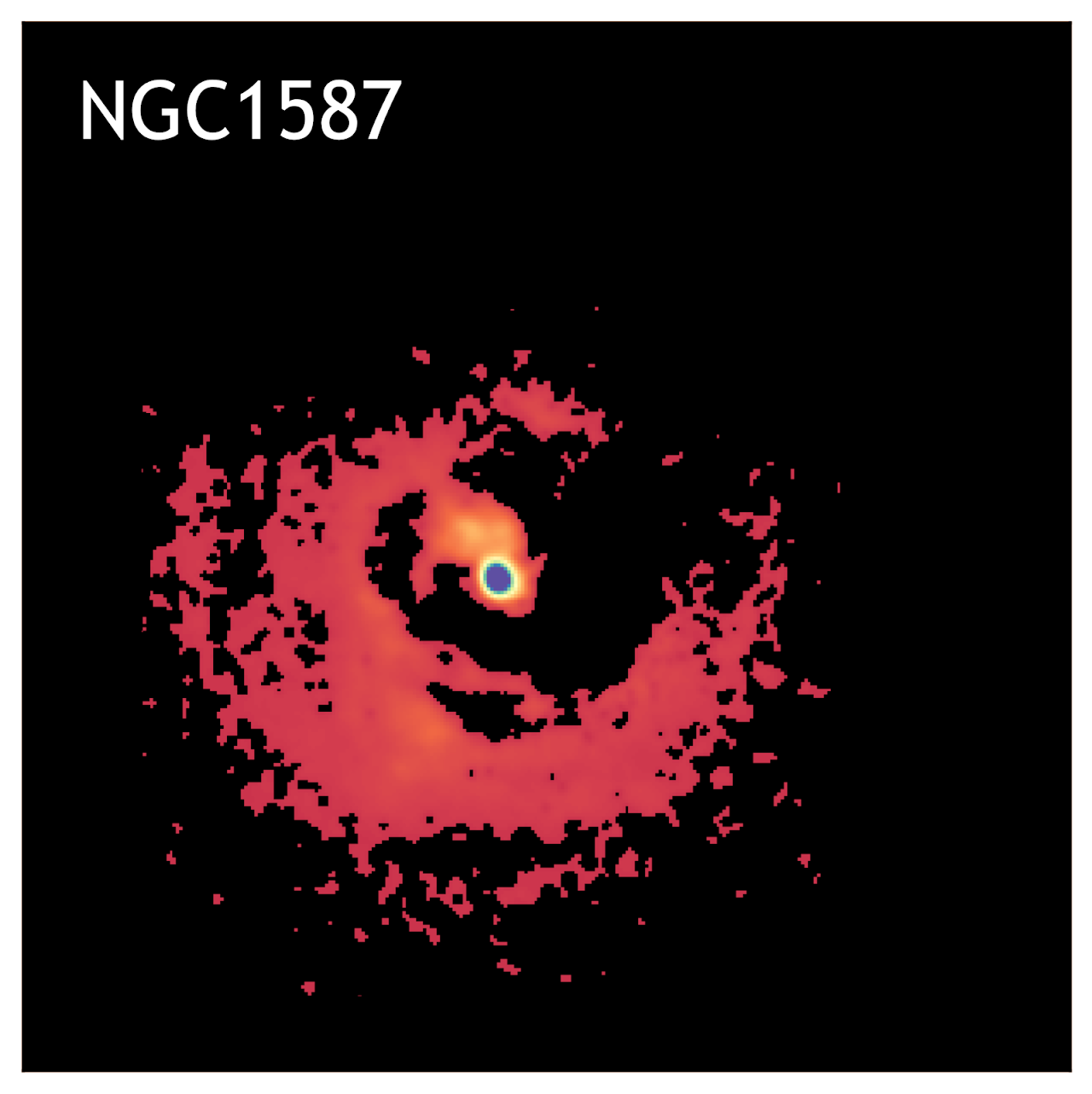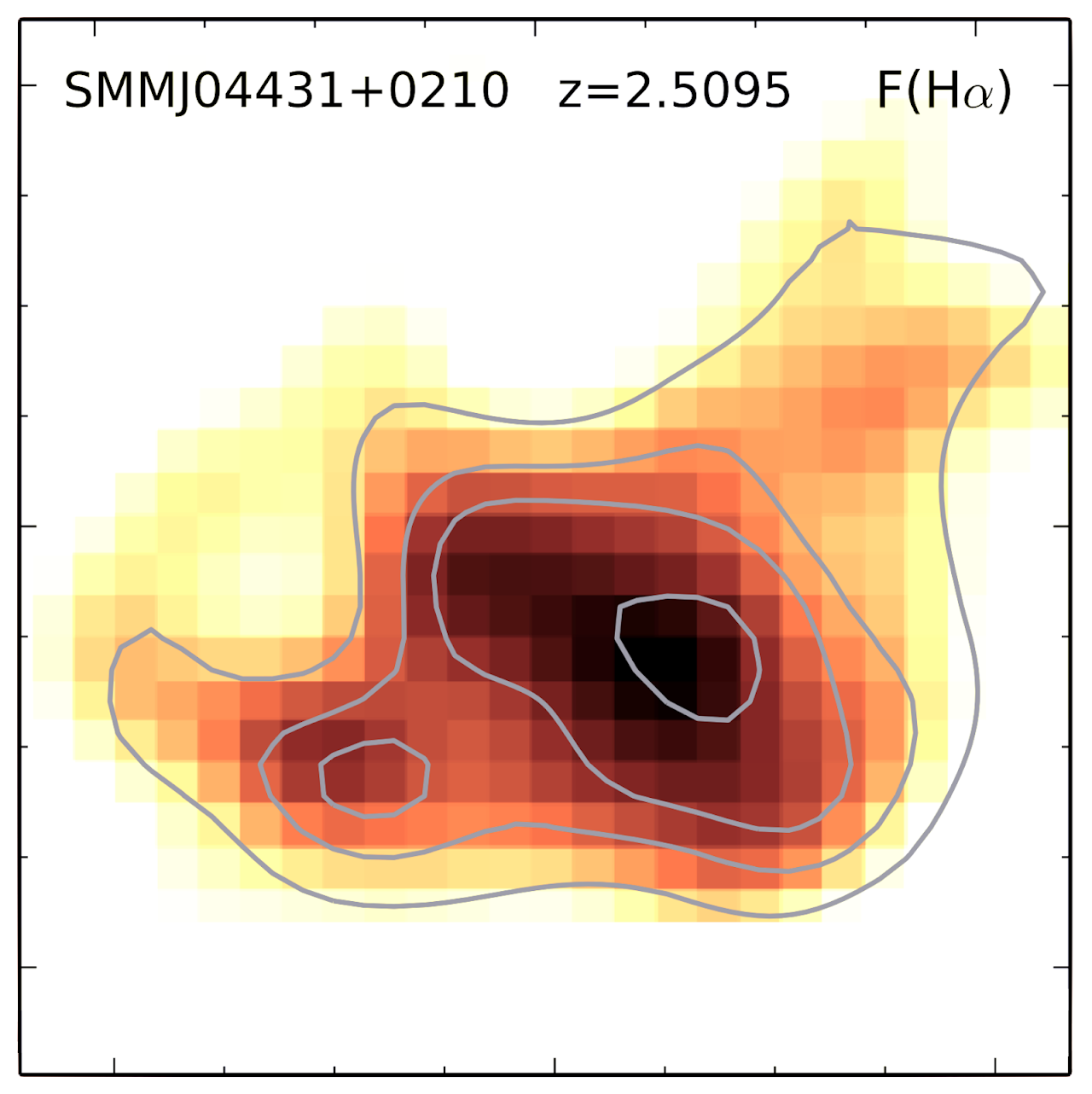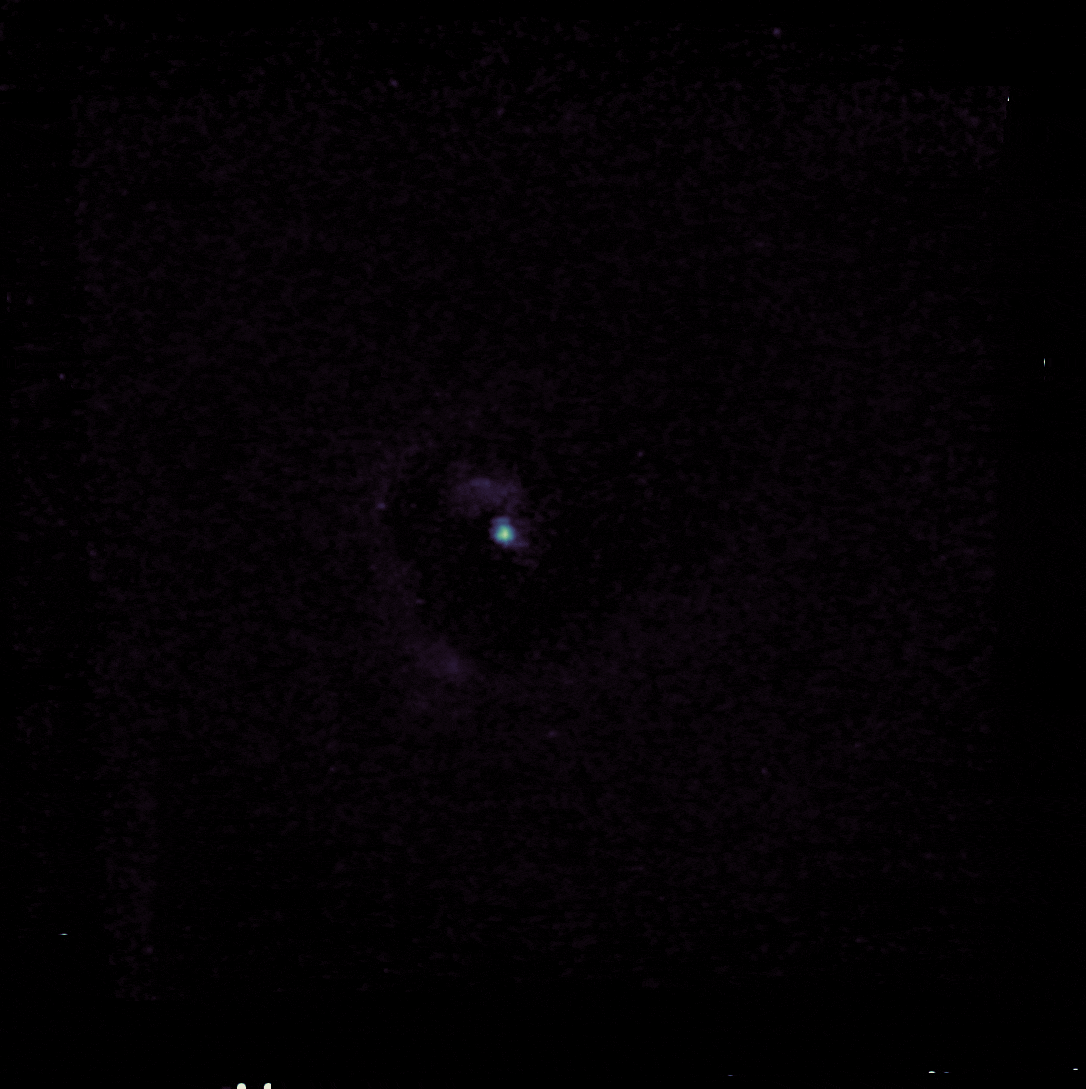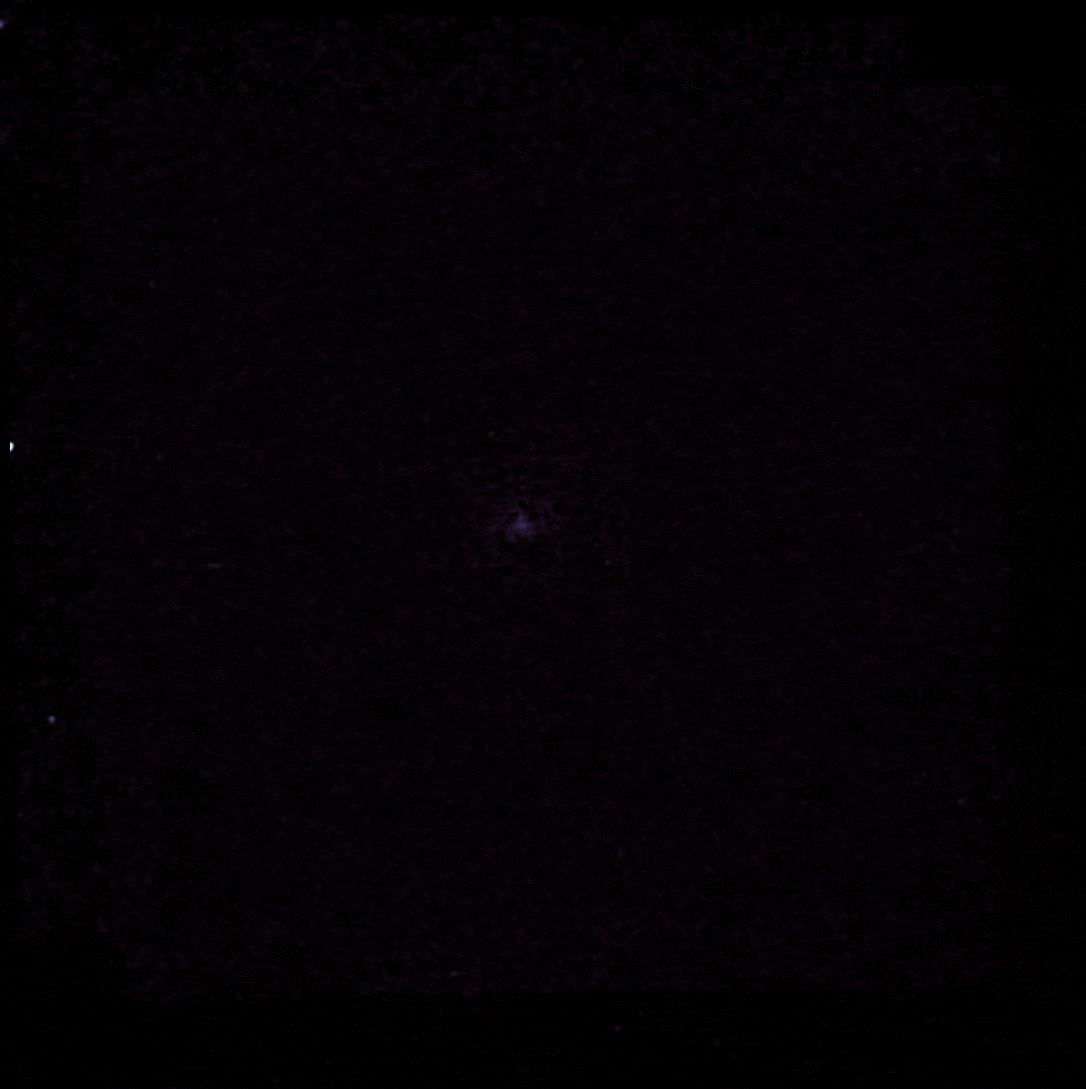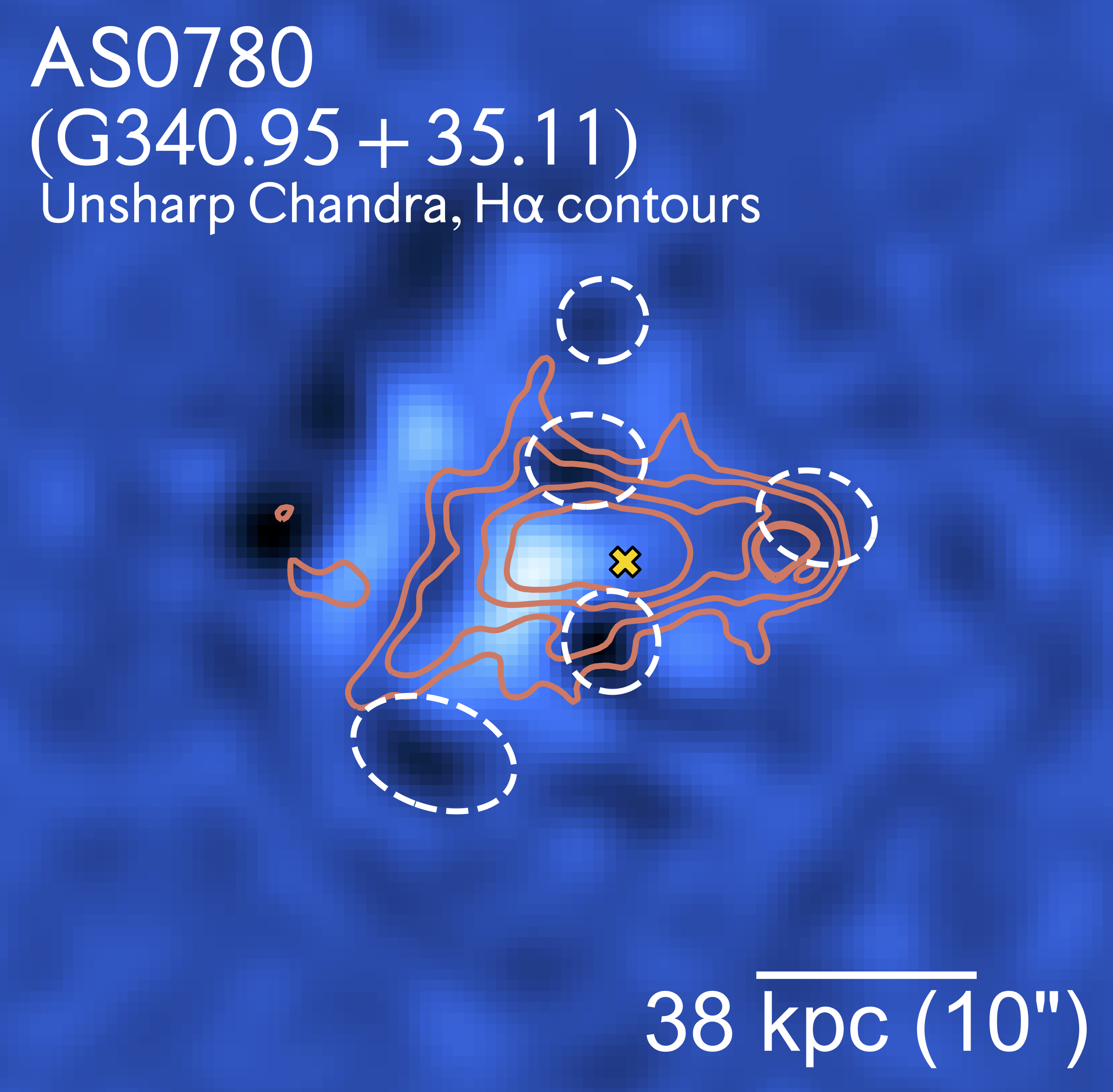
X-Ray Cavity Dynamics and Their Role in the Gas Precipitation
I study the effect of the ICM ``weather'' on the AGN feedback and explore if such is necessary to produce multiphase condensation on a sample of nearby Planck selected galaxy clusters using Chandra observations. MUSE observations of 18 optical emitting clusters show that in most of the cases, the projected filaments appear to be located behind or around the bubbles, indicating that AGN feedback plays an important role in forming the warm filaments by likely enhancing turbulence or uplift. In a few cases the clusters either lack cavities or the connection with their cavities is vague, suggesting different turbulence-driven mechanisms (sloshing/mergers) or physical time delays involved.
Learn more
 https://orcid.org/0000-0001-6638-4324
https://orcid.org/0000-0001-6638-4324